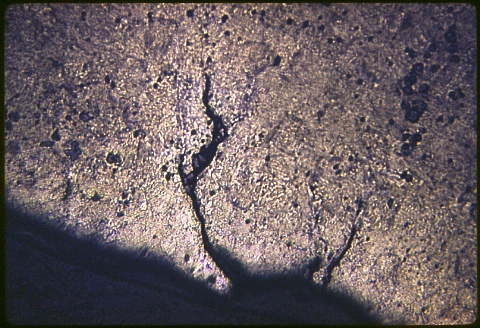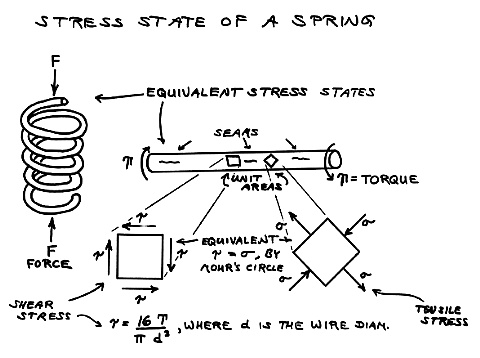Microstructures
by
George
Langford, Sc.D., Massachusetts Institute of Technology, Cambridge, MA,
1966
Copyright©2005 by George Langford
Low Alloy Steels - Lesson 3 -
Second specimen

|
Here we have a chair spring that failed in fatigue.
The photomicrograph at left was made at 200X with a Nital etch.
Note the decarburization and seams, which are artifacts of careless hot
rolling practice prior to the wire drawing. Folded over flash
(fins) from the rolling operation was not removed and acted to
concentrate stress in the finished spring.
|

|
The wire in a coil spring like this one is under torsional
stress (not bending) during compression or extension of the
spring. The maximum tensile stress occurs at 45 degrees to the
longitudinal axis of the wire at the unblemished surface of the
wire. However, the greatest stress is actually at the bottom of
the crevices formed by the defects, so the longitudinal seams act as
stress risers regardless of whether the spring is compressed or
extended.
The next four photomicrographs illustrate the effects of differential
hardenability brought about by macrosegregation.
|